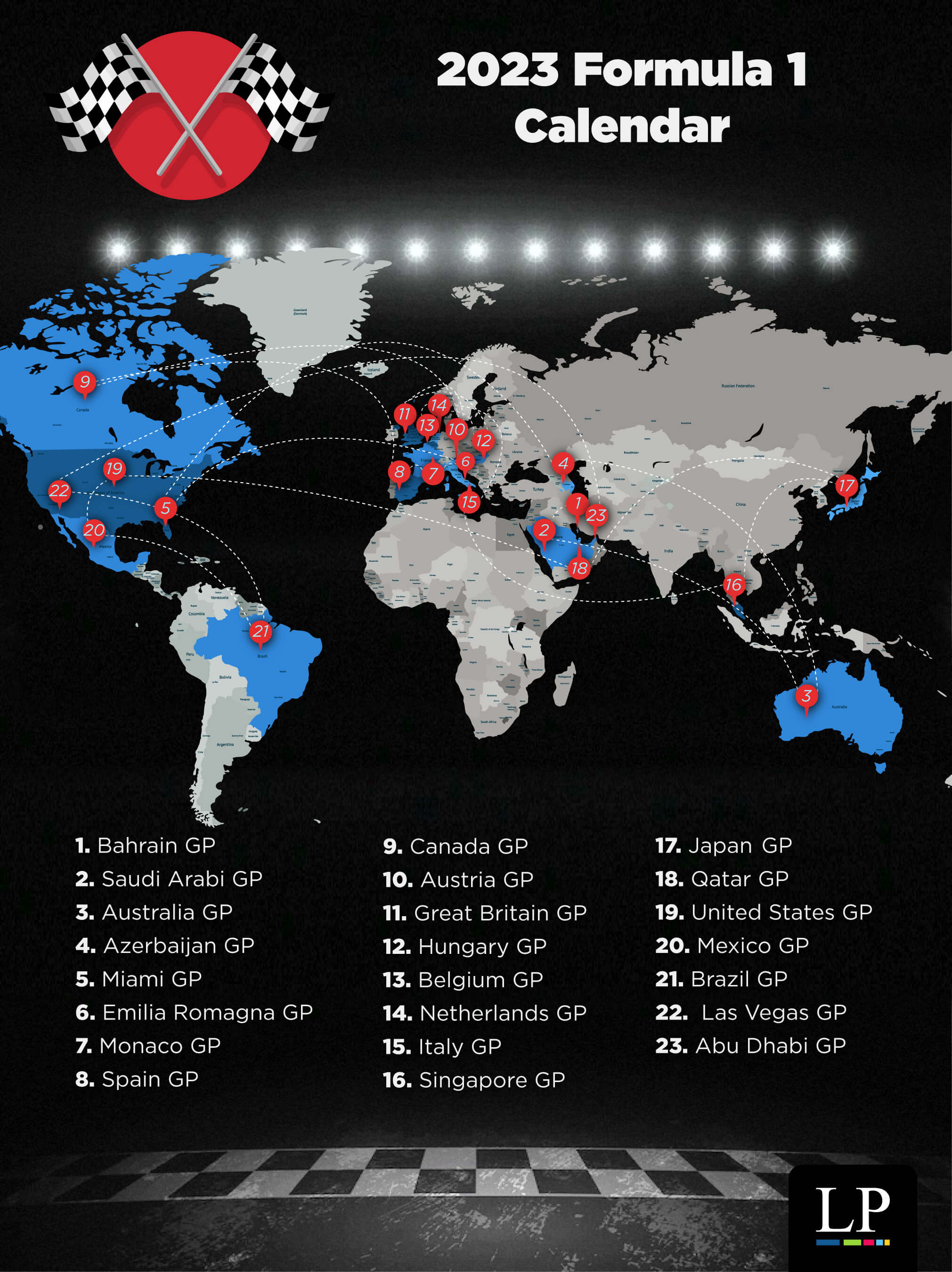2023 Formula One Calendar: An Affront To The Planet And Efficiency
The 2023 automotive awards schedule seems haphazard. It does not respect geographical logic, which means an indiscriminate production of CO2 in times of environmental awareness.

Photo: Pexels
LatinAmerican Post | Santiago Gómez Hernández
Escucha este artículo
Leer en español: Calendario de Fórmula Uno de 2023: una afrenta contra el planeta y la eficiencia
Next Sunday, March 5, the most important motor competition in the world returns. Formula One begins this year with the Bahrain Grand Prix, in the Persian Gulf. However, the 23-race calendar seems to have been designed without prioritizing efficiency in fuel savings and indiscriminate transoceanic trips that increase CO2 emissions.
As an example of this lack of logistics, after the awards in Bahrain (March 5) and Saudi Arabia (March 19), Formula One travels more than 10,000 kilometers to reach the east coast of Australia (April 2) in Melbourne. . This trip generates 6.5 tons of CO2 for a first-class picket (2.2 tons in economy class) according to myclimate.org. For now, it has not been announced if, after the prize in Australia, someone will come to replace the one in China (April 16). Otherwise, the next one will be until April 30.
But this shipment of cars, staff, and infrastructure after the prize in Australia, travels again to Eurasia for the Azerbaijan Grand Prix. Which implies a trip of about 13,000 kilometers and a carbon footprint of 6.6 per picket in first class. What is striking is that a journey between Jeddah and Baku (the venues of the awards in Saudi Arabia and Azerbaijan) is only 2,300 kilometers long and pollutes 1.2 tons per trip in first class (0.42 tons in Economy).
Also read: The 7 most expensive contracts in sports history
But if this trip is not already inefficient, after Baku, the "Big Top" then travels 11,000 kilometers (approximately) to arrive in Miami (May 7) and then return to Europe on May 21 for the Grand Emilia-Romana Award in Bologna. This translates into 8,200 kilometers of distance and another 3.9 tons of carbon dioxide for each first-class ticket.
After the award in Italy, Formula One arrives in Monaco (May 28) and Spain (June 4). Short routes of 300 km and 500 km, with a CO2 production of 0.289 tons between Bologna and the principality and 0.35 tons to Barcelona.
However, there's another big jump, this time to Montreal, Canada (June 18). About 5,900 kilometers between the two cities, which is equivalent to 2.8 tons of CO2 per seat in first class. Then they return to Europe, to Austria (July 2), which is about 6,400 kilometers away, and 3.1 tons of CO2.
In summer, it runs through several European countries, so the distances are much shorter. UK (July 9), Hungary (July 23), Belgium (July 30), Netherlands (August 27), and Italy (September 3). By mid-September, Formula One returns to Asia, this time to Southeast Asia, to Singapore (September 17). A journey of about 10,200 kilometers, with a carbon footprint of 5 tons per First Class. Then it's a trip to Japan (September 24), to later return to the Middle East.
On October 8, the Qatar Grand Prix will be held, after a journey of about 8,300 kilometers between Japan and the emirate, with about 4 tons of carbon footprint.
The calendar then returns to the United States, with the award in Austin, Texas (October 22). A distance of more than 12,600 kilometers with a production of 6.4 tons in first-class flights.
Subsequently, the Awards come in Mexico (October 29) and Brazil (November 5). Trips of 2,800 km (1.4 t of CO2) and 7,500 km (3.6 t of CO2), respectively. To return to the United States again on November 18 for the Las Vegas prize (9,800 kilometers and 4.8 tons of CO2). The calendar ends in Abu Dhabi, which means 13,200 km and another 6.7 tons of CO2 per person in first class.
These inefficient trips, which seem to have no geographical logic, are a clear sign of the organization's lack of interest in making a responsible calendar with the current climate situation. Not only is it striking to see how the same single-seaters are machines made to consume gasoline, but the transport of the same event represents an expense in the budget and in trips that do not help the environment.





